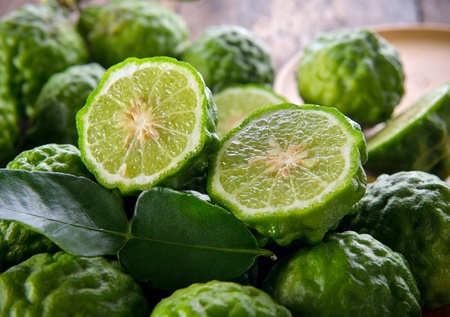
Bergamot (Citrus bergamia Risso et Poiteau) is a citrus fruit that is restricted in cultivation to the narrow coastal Reggio Calabria region in Southern Italy. About 25 thousand Tonnes are produced annually. The cultivation of the fruit is susceptible because it relies on specific types of weather and soil conditions. There are three main cultivars Fantastico, Femminello and Castagnaro.
The peels of this fruit yield an important essence, that is a standard component of the perfume industry. This essential oil of the peel is also used in the pharmaceutical industry for its antibacterial and antiseptic properties (Verzera et al., 2003). The peel is about 60% of the processed fruit and is wasted if not used further. The peel also contains pectins and variety of flavonoids (Mandalari et al., 2006a,b). The peel contains the characteristic and unique flavanone rutinosides and neo-hesperosides derived from naringenin, eriodictyol and hesperetin. Moreover, a small amount of flavone O- and C-glycosides, not previously found in orange and lemon peels, have been isolated.
The Essential Oil
The essential oil is composed on both volatile and non-volatile fractions. The volatile fraction is composed mainly of limonene, linalool and linalyl acetate. A variety of oxygenated compounds form up to 60% of this volatile fraction. The principal ingredients in the non-volatile fraction are largely ether like and belong to the coumarin and psoralene family. Bergaptene (5-methoxypsoralene) in the most important component of this fraction and has phototoxic properties which can damage human skin. The IFRA (International Fragrance Association) recommends that no more than 75 ppm of bergaptene must be used in products to be applied to skin that is exposed to sunlight.
Bergamot oil is one of the classic flavours found in Earl Grey tea.
Components In Bergamot Juice
The juice also has a variety of flavonoids which have been analysed using DAD-ESI-LC-MS-MS. Five of these are C-glucosides (lucenin-2, stellarin-2, isovitexin, scoparin, and orientin 4‘-methyl ether), and three are O-glycosides (rhoifolin 4‘-O-glucoside, chrysoeriol 7-O-neohesperidoside-4‘-O-glucoside, and chrysoeriol 7-O-neohesperidoside) (Gattuso et al., 2006).
From a health point of view, the Italians have used bergamot juice as a means of reducing cholesterol levels and contributing to cardiovascular health. In the juice and albedo, one finds a unique combination of glycosides and flavonoids. These include a number of actives:- neoeriocitrin, neohesperidin, naringin, rutin, neodesmin, rhoifolin and poncirin. Previous posts have reported on the benefits of naringin in animal models of atherosclerosis and neoeriocitrin and rutin are known to prevent the oxidation of LDL cholesterols.
The juice also contains buteridine and melitidine, which are 3-hydroxy-3-methylglutaryl derivatives of hesperetin and naringenin, respectively. Buteridine and melitidine show structural similarity to HMG-CoA reductase substrate, and have been proposed to possess the statin-like properties, by selective inhibition of HMG-CoA reductase The juice produces a hypolipaemic effect in rats (Mollace et al., 2011).
Some Aspects Of Bergamot Juice Processing
The enzymes, Pectinase 62L and Pectinase 690L, can efficiently deglycosylate bergamot flavonoids, potentially improving their uptake and increasing the beneficial effects through greater bioavailability (Mandalari et al. 2006b). A pectic oligosaccharide fraction from bergamot obtained by treatment with Pectinase 62L has a potential prebiotic effect in an in vitro fermentation system (Mandalari et al. 2007).
Naringenin
Naringenin has potent activity in suppressing neuroinflammation, especially in those with Alzheimer’s Disease.(Yang et al., 2019). The site of action are the microglial cells which are the ‘guardians’ of the central nervous system. It is not known yet whether bergamot juice might help alleviate or even reduce the risk of developing such a condition but the studies on individual components must offer some promise.
Products
Buy your bergamot oils and products here
This article contains links to our affiliate marketing partner products. Please read the affiliate disclosure.
References
Gattuso, G., Caristi, C., Gargiulli, C., Bellocco, E., Toscano, G., Leuzzi, U. (2006) Flavonoid glycosides in bergamot juice (Citrus bergamia risso). J. Agric. Food Chem. 54, pp. 3929-3935.
Mandalari, G., Bennett, R.N., Bisignano, G., Saija, A., Dugo, G., Lo Curto, R.B., Faulds, C.B. and Waldron, K.W. (2006a) Characterization of flavonoids and pectins from bergamot (Citrus bergamia Risso) peel, a major by-product of essential oil extraction. J Agric Food Chem 54 pp. 197–203.
Mandalari, G., Bennett, R.N., Kirby, A.R., Lo Curto, R.B., Bisignano, G., Waldron, K.W. and Faulds, C.B. (2006b) Enzymatic hydrolysis of flavonoids and pectic oligosaccharides from bergamot (Citrus bergamia Risso) peel. J Agric Food Chem. 54 pp. 8307–8313.
Mandalari, G., Nueno Palop, C., Tuohy, K., Gibson, G.R., Bennett, R.N., Waldron, K.W., Bisignano, G., Narbad, A., et al. (2007) In vitro evaluation of the prebiotic activity of a pectic oligosaccharide-rich extract enzymatically derived from bergamot peel. Appl. Microbiol. Biotechnol. 73 pp. 1173–1179.
Mollace, V., Sacco, I., Janda, E., Malara, C., Ventrice, D., Colica, C., …Romeo, F. (2011). Hypolipemic and hypoglycaemic activity of bergamot polyphenols: from animal models to human studies. Fitoterapia, 82(3), pp. 309-316.
Yang, Z., Kuboyama, T. Tohda, C. (2019) Naringenin promotes microglial M2 polarization and Aβ degradation enzyme expression. Phytotherapy Res. https://doi.org/10.1002/ptr.6305
Verzera, A., Trozzi, A., Gazea, F., Cicciarello, G. and Cotroneo, A. (2003) Effects of rootstock on the composition of bergamot (Citrus bergamia. Risso et Poiteau) essential oil. J Agric. Food Chem. 51, pp. 206–210.
Leave a Reply